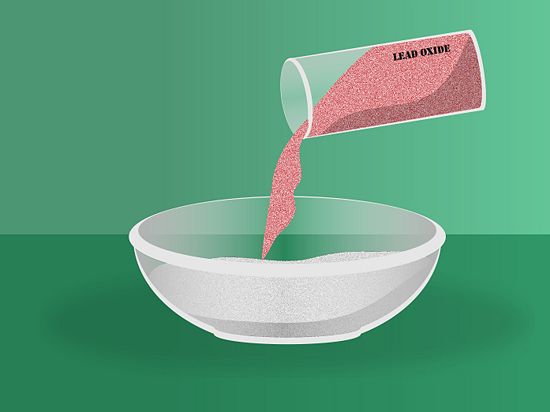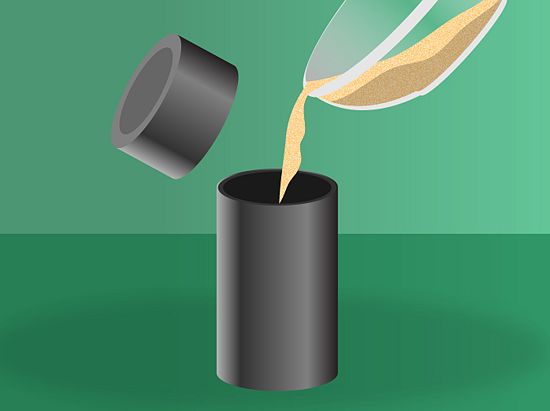Monday, 17 June 2013
Saturday, 15 June 2013
Wind Energy Vehicle technology
MAIN PARTS :
• Wind mill
• Battery
• Robotic car
• Rotating blades
• Gear and wheel setup
• Coil and permanent magnet
PRINCIPLE OF WORKING :
It works on following principle.
1. The vanes in the turbine are rotated with constant speed.
2.The gear setup can be adjusted to control the rotation speed.
3.A magnet is connected with the gear.
4.The magnet will be rotated along with the vanes.
5.The coil is fixed around the magnet.
6. According to Faraday's law, "As long as there is a change in magnetic flux linked with the coil, an emf is induced." So, In each and every rotation, electricity is generated.
7.The energy from the windmill is stored in a battery. The car gets energy from the battery.

.jpg)
Labels:
Alternative energy
Hydraulic Disk Brake
The Hydraulic Disk brake is an arrangement of braking mechanism which uses brake fluid, which is ethylene glycol,for transferring pressure from the controlling mechanism to the braking mechanism.
In 1914 Fred Duesenberg started hydraulic brakes on his racing cars. In 1918 Malcolm Lougheed developed a hydraulic brake system.
WORKING :
1. In Disk Break System, It uses the wheel disc with the inner arrangement of master cylinder and brake pad as well as return spring arrangement.
2. The air from the compressor is used to operate the master cylinder at the certain pressure, here the solenoid valve is used to operate the master cylinder and it is controlled by the control unit.
3. when ever the brake apply the control unit will activate the solenoid valve to supply the sir from the compressor and it passed through the master cylinder then it will ex tern the piston rod which is inside of the master cylinder after releasing the control unit activate the solenoid valve to stop the supply from the compressor, then the master cylinder will released the piston rod to the original position.
IMAGE OF HYDRAULIC DISK BRAKE :
Labels:
Bare technology,
Working
Working of Refrigerators or freezers
Refrigerator is electric machine which is intended to provide cooling.Refrigeration is process of removing heat from enclosed space.It's all based on the following physics: - a liquid is rapidly vaporized (through compression) - the quickly expanding vapor requires kinetic energy and draws the energy needed from the immediate area - which loses energy and becomes cooler.
Main Parts Of Refrigerators :
1. Compressor
2 .Heat-exchanging pipes
3. Expansion valve
4. Heat-exchanging pipes
5. Refrigerant- the liquid
Main Parts Of Refrigerators :
1. Compressor
2 .Heat-exchanging pipes
3. Expansion valve
4. Heat-exchanging pipes
5. Refrigerant- the liquid
Working Of Refrigerators:
1. The compressor compresses the refrigerant gas used in the refrigerator. This compression increases the refrigerant’s temperature.
2. The outside coil or the heat exchanging pipes are then used to dissipate the heat of the refrigerant.
3. As the refrigerant become cool, it condenses into liquid form and flows through the expansion valve.
4. The liquid refrigerant is then allowed to move from a high-pressure zone to a low-pressure zone as it flows through the expansion valve. This makes the refrigerant expand and evaporate. The evaporation absorbs heat from refrigerant and turn the temperature down.
5. The heat exchanging pipes allows the refrigerant to absorb heat thus making the temperature inside the refrigerator drop.
6. The cycle goes on and the refrigerator is able to keep things cold.
The whole cycle is shown below in image.
Home Appliance Wind Turbine
The above image shows installation of wing turbine in home appliance.
Now a days use of energy become very effective using innovative technologies.This is one of them.
Electricity at home can be produced with small-scale wind turbines.Wind turbines collects the power of the wind and use it to generate electricity.Forty percent of all the wind energy in Europe blows over the UK. A typical system in an exposed site could easily generate more power than your lights and electrical appliances use.
Wind turbines use large blades to catch the wind. When the wind blows, it strike to blades ,the blades are forced to move in round, driving a turbine which generates electricity. The stronger the wind, the more electricity produced.
There are two types of domestic-sized wind turbine:
1. Pole mounted: The wind turbine and bled are mounted on free standing pole.capacity of 5kW to 6kW.
2. Building mounted: These are smaller than most mounted systems and can be installed on the roof of a home where there is a suitable wind resource. Capacity of 1kW to 2kW.
Labels:
Projects
Working of chimaney
Chimney :
All chimneys work on principle of something called an updraft. Some are as small as a two-inch pipe and others are so large.
Updraft is an airflow that rises bottom to top. A pressure difference creates this updraft. This pressure difference is created by the inside of the chimney being sealed from the outside air.
All chimneys work on principle of something called an updraft. Some are as small as a two-inch pipe and others are so large.
Updraft is an airflow that rises bottom to top. A pressure difference creates this updraft. This pressure difference is created by the inside of the chimney being sealed from the outside air.
These are some conditions that chimney configuration has to met:
1. All chimneys must extend a certain distance above the roof line of a house or building. If this does occur a wind will cause the chimney to downdraft back into the house and create a reverse flow of the exhausting gas.
2.This can be seen when a fireplace blows smoke out of the front of the opening or when a wood stove puffs back smoke.
3.If the chimney is properly constructed and you still notice a small downdraft it may be clogged.
4.This is also a very good indication that it may be time to have the chimney cleaned or swept as the creosote is building up inside and impeding the airflow.
Ads : eBay lets buy somthing
Labels:
Alternative energy,
Working
Friday, 14 June 2013
Making of Glass in easy steps
Glass is very useful material.Process for making glass is described below in 10 steps.
1. Get sufficient amount of silica sand.
2. Add Sodium carbonate and calcium oxide to the sand.
3. Add other chemical to improve quality of glass.
4. Add desired color chemical.
5. Place the produced chemical into heat resistance crucible.
6. Melt the mixture into liquid.
7. Homogenized and remove bubbles from mixture.
8. Shape the molten glass.
9. Let the glass cool.
10.Treat-Heat glass to strengthen it.
Labels:
production
Six Stroke engine
Six-stroke engine :
In the six-stroke engine developed by the students of College of Engineering, Trivandrum, India, the first four strokes are the same as a four stroke internal combustion engine.
After the exhaust stroke, instead of air/fuel mixture (as in case of petrol engines), fresh air is sucked into the cylinder from the air filter, and is removed during the sixth stroke. The valve overlaps have been removed and the additional two strokes have been provided for better scavenging, using air injection.
The engine shows 40% reduction in fuel consumption and dramatic reduction in pollution. Its specific power is not less than that of a four-stroke petrol engine. The engine can run on a variety of fuels, ranging from petrol and diesel to LPG. An altered engine shows a 65% reduction in CO pollution when compared with the four stroke engine from which it was developed.
The TrivandrumTeam : Aaron Joseph George, Arun K Nair, Boby Sebastian, and Krishnaraj U. It took them almost two years to develop the engine.
Its features are:
1. Reduction in fuel consumption
2. Dramatic reduction in pollution
3. Better scavenging and more extraction of work per cycle
4. Lower working temperature makes it easy to maintain optimum engine temperature level for better performance
5. Less friction, so less wear and tear
The six-stroke engine does not require any basic modification to the existing engines. All technological experience and production methods remain unaltered.
This Engineering students have been awarded the 'Indian Society for Technical Education - National awarded' for Best B. Tech project of 2006. (ISTE/BBSBEC-B.Tech./Award/2006)
In the six-stroke engine developed by the students of College of Engineering, Trivandrum, India, the first four strokes are the same as a four stroke internal combustion engine.
After the exhaust stroke, instead of air/fuel mixture (as in case of petrol engines), fresh air is sucked into the cylinder from the air filter, and is removed during the sixth stroke. The valve overlaps have been removed and the additional two strokes have been provided for better scavenging, using air injection.
The engine shows 40% reduction in fuel consumption and dramatic reduction in pollution. Its specific power is not less than that of a four-stroke petrol engine. The engine can run on a variety of fuels, ranging from petrol and diesel to LPG. An altered engine shows a 65% reduction in CO pollution when compared with the four stroke engine from which it was developed.
The TrivandrumTeam : Aaron Joseph George, Arun K Nair, Boby Sebastian, and Krishnaraj U. It took them almost two years to develop the engine.
Its features are:
1. Reduction in fuel consumption
2. Dramatic reduction in pollution
3. Better scavenging and more extraction of work per cycle
4. Lower working temperature makes it easy to maintain optimum engine temperature level for better performance
5. Less friction, so less wear and tear
The six-stroke engine does not require any basic modification to the existing engines. All technological experience and production methods remain unaltered.
This Engineering students have been awarded the 'Indian Society for Technical Education - National awarded' for Best B. Tech project of 2006. (ISTE/BBSBEC-B.Tech./Award/2006)
Advertisement :
eBay online mega store India
ebay.au for Australia
ebay.co.uk for UK
ebay.fr for france
eBay online mega store India
ebay.au for Australia
ebay.co.uk for UK
ebay.fr for france
Labels:
Bare technology
Subscribe to:
Comments (Atom)
.jpg)

.jpg)

.jpg)

.jpg)















